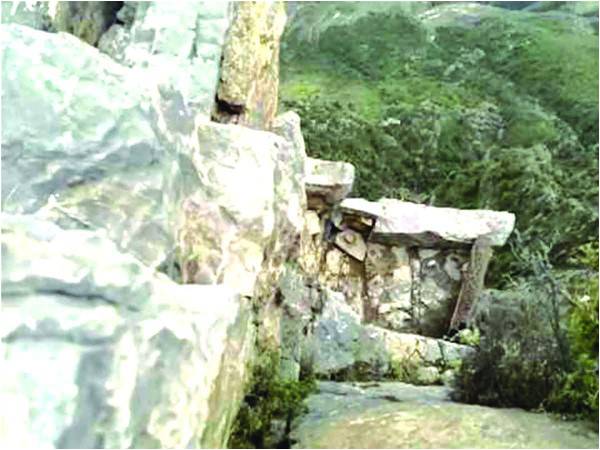
I consider what we call Solomon’s Throne as a great hidden treasure of Pakistan – known to us commonly as as Takht-e-Sulaiman or Koh-e-Sulaiman. The locals name it “Qaisa Ghar” or “Qassay Ghar” in Pashto.
Takht-e-Sulaiman stands some 11,000 feet above sea level and the entire valley is green, situated between three regions: North Waziristan, Zhob and Dera Ismail Khan.
The beliefs and lore surrounding this place are fascinating. It is believed by some that Hazrat Sulaiman (A.S), or Solomon to the Western world, used this natural feature as his throne to regulate the Jinn (genies). Some say mega stones were carried by them while some say the rocks were sculpted by them. All Jinns (genies), we are told, remained under his control, and this was the “throne” from where he would stand and issue commands to them.
The locals residing near Takht-e-Sulaiman are eager to offer their testimony – stating that supernatural forces exist in this region and they call them “devaan ow peryaan”. But, as they are quick to assure us, they don’t bother tourists and visitors!
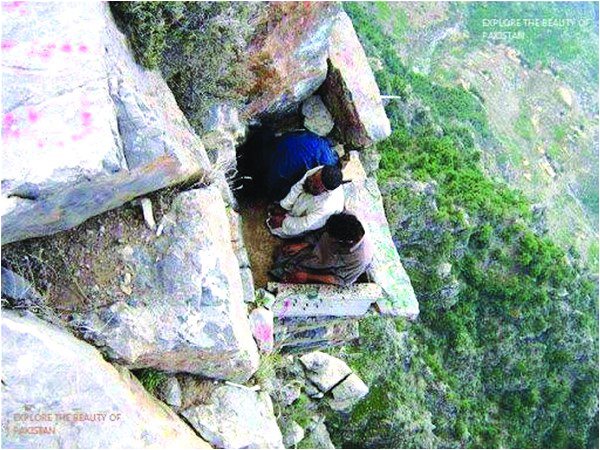
Newcomers, accompanied by local guides, are advised to give thanks by offering prayer near the throne, so as to avoid the wrath of the Jinns. Those people who cannot go down to the ‘throne’ itself can pray above the plateau. To those who believe in these things, it is a very serious affair indeed.
It takes almost a day to climb the mountain. Visitors often carry sheep or other sacrificial animals to be eaten after reaching the top. The common favorite food is Khadda Kabab, which is prepared after quite a bit of a struggle. The sheep is slaughtered and skinned. Vinegar, salt and spice powders are applied to the meat. Then a hole is dug and the sheep is put into it. The top of this pit is covered by a pewter lid and clay is affixed by sides to seal it – effectively creating an oven. The meat inside the pit is cooked using slow-burning coals. It takes almost two hours. The result is delectable: crispy, tender and juicy.
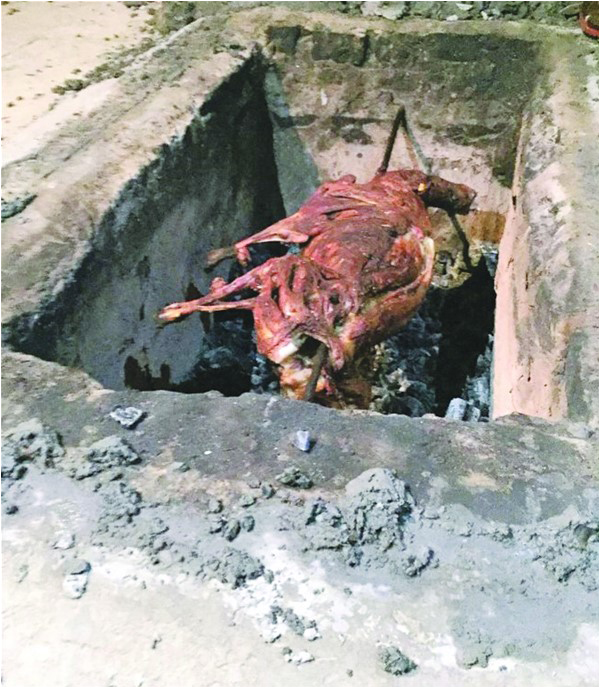
There is no water on the mountain either. So you’ll have to take your own. In short, what you are setting yourself up for is a spot of trekking, adventure and a picnic.
Koh-e-Sulaiman is surrounded by olive trees, and a gigantic forest. The common wild animals and birds found there include markhors, rabbits, jackals, wolves, stags, cobras, partridges, eagles and parrots. The locals confirm that cheetahs and bears were also seen over a hundred years ago but now they might have been hunted to death. Numerous precious olive trees are cut by the people of Zhob and Sherani in order to sell the wood to combat chilly winters and meet basic economic needs. Balochistan, despite being a massive producer of natural gas, has failed to provide Sui gas to the people of the region.
Koh-i-Sulaiman is one of the wonders of the world but It has thoroughly been ignored by Pakistan’s tourism authorities. It could be commercialised if facilities are built on or near the mountain. The people of Balochistan themselves rarely come here
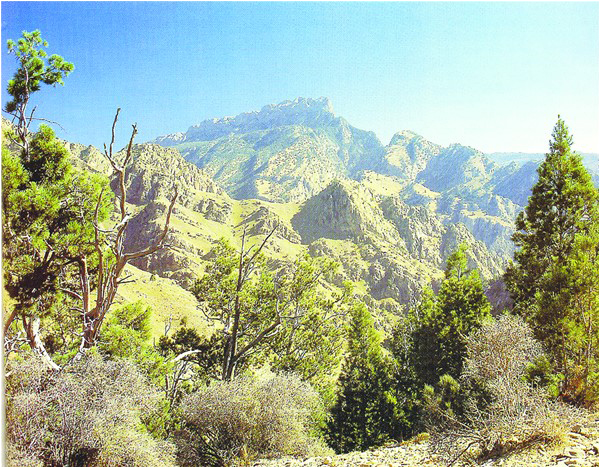
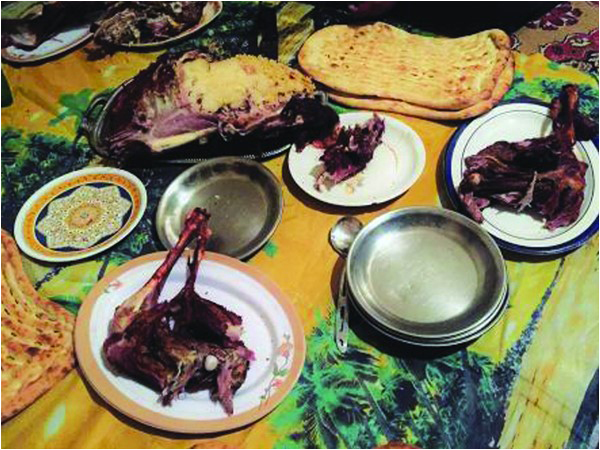
The Pashto word ‘Qaisa’, used for this natural feature, refers to the legendary Pashtun/Afghan progenitor Qais Abdur Rashid, who is buried in the top of Koh-i-Sulaiman range. Qais was the legendary ancestor of the Pashtun people, who travelled to Makkah and Madinah in the early days of Islam and accepted the faith at the hands of the Prophet Muhammad (PBUH). Therefore, the locals of this region call it in Pashto “Da Kase Baba Ghar”.
Colonial British archives as well as local tales are rich in content.
This region is well-known for producing nuts and dried fruit. Pine nuts (chalghoza) are available in abundance. Chalghoza and olive groves dot the mountain. Olive oil and pine nut exports to the international market from here could be a boon to the economy of Pakistan. Instead, the region lacks almost all facilities of modern life – healthcare, clean and safe drinking water and much more. The people mostly depend on livestock and agriculture and literacy is low.
Gulf Arab princes are known to come here to hunt, well guarded by armed men. They come to hunt down precious birds, including eagles, with the consent of Pakistani authorities.
Such are the Takht-e-Sulaiman and Koh-e-Sulaiman areas: full of potential, but thoroughly neglected and untapped.
Asad Khan Betini is a Balochistan-based freelance journalist. He may be reached at asdprg@gmail.com
Takht-e-Sulaiman stands some 11,000 feet above sea level and the entire valley is green, situated between three regions: North Waziristan, Zhob and Dera Ismail Khan.
The beliefs and lore surrounding this place are fascinating. It is believed by some that Hazrat Sulaiman (A.S), or Solomon to the Western world, used this natural feature as his throne to regulate the Jinn (genies). Some say mega stones were carried by them while some say the rocks were sculpted by them. All Jinns (genies), we are told, remained under his control, and this was the “throne” from where he would stand and issue commands to them.
The locals residing near Takht-e-Sulaiman are eager to offer their testimony – stating that supernatural forces exist in this region and they call them “devaan ow peryaan”. But, as they are quick to assure us, they don’t bother tourists and visitors!

Newcomers, accompanied by local guides, are advised to give thanks by offering prayer near the throne, so as to avoid the wrath of the Jinns
Newcomers, accompanied by local guides, are advised to give thanks by offering prayer near the throne, so as to avoid the wrath of the Jinns. Those people who cannot go down to the ‘throne’ itself can pray above the plateau. To those who believe in these things, it is a very serious affair indeed.
It takes almost a day to climb the mountain. Visitors often carry sheep or other sacrificial animals to be eaten after reaching the top. The common favorite food is Khadda Kabab, which is prepared after quite a bit of a struggle. The sheep is slaughtered and skinned. Vinegar, salt and spice powders are applied to the meat. Then a hole is dug and the sheep is put into it. The top of this pit is covered by a pewter lid and clay is affixed by sides to seal it – effectively creating an oven. The meat inside the pit is cooked using slow-burning coals. It takes almost two hours. The result is delectable: crispy, tender and juicy.

There is no water on the mountain either. So you’ll have to take your own. In short, what you are setting yourself up for is a spot of trekking, adventure and a picnic.
Koh-e-Sulaiman is surrounded by olive trees, and a gigantic forest. The common wild animals and birds found there include markhors, rabbits, jackals, wolves, stags, cobras, partridges, eagles and parrots. The locals confirm that cheetahs and bears were also seen over a hundred years ago but now they might have been hunted to death. Numerous precious olive trees are cut by the people of Zhob and Sherani in order to sell the wood to combat chilly winters and meet basic economic needs. Balochistan, despite being a massive producer of natural gas, has failed to provide Sui gas to the people of the region.
Koh-i-Sulaiman is one of the wonders of the world but It has thoroughly been ignored by Pakistan’s tourism authorities. It could be commercialised if facilities are built on or near the mountain. The people of Balochistan themselves rarely come here


The Pashto word ‘Qaisa’, used for this natural feature, refers to the legendary Pashtun/Afghan progenitor Qais Abdur Rashid, who is buried in the top of Koh-i-Sulaiman range. Qais was the legendary ancestor of the Pashtun people, who travelled to Makkah and Madinah in the early days of Islam and accepted the faith at the hands of the Prophet Muhammad (PBUH). Therefore, the locals of this region call it in Pashto “Da Kase Baba Ghar”.
Colonial British archives as well as local tales are rich in content.
This region is well-known for producing nuts and dried fruit. Pine nuts (chalghoza) are available in abundance. Chalghoza and olive groves dot the mountain. Olive oil and pine nut exports to the international market from here could be a boon to the economy of Pakistan. Instead, the region lacks almost all facilities of modern life – healthcare, clean and safe drinking water and much more. The people mostly depend on livestock and agriculture and literacy is low.
Gulf Arab princes are known to come here to hunt, well guarded by armed men. They come to hunt down precious birds, including eagles, with the consent of Pakistani authorities.
Such are the Takht-e-Sulaiman and Koh-e-Sulaiman areas: full of potential, but thoroughly neglected and untapped.
Asad Khan Betini is a Balochistan-based freelance journalist. He may be reached at asdprg@gmail.com

